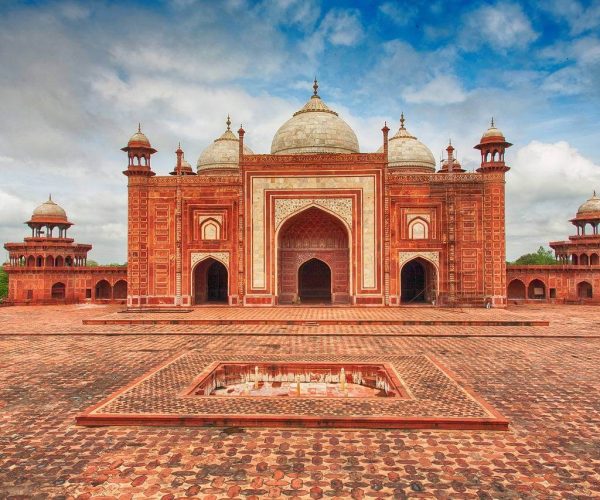Agra is one of the cities that you must visit on your India Tour. It is one of the few cities that have shaped Indian cultures into what they are today.
Once part of the trade route, a capital city and home to the world’s wonder, the city has plenty of things and places to add to your to-do list.
There is more to Agra than just the Taj Mahal. We have listed some of the city’s best places and iconic monuments recommended by locals.
Taj Mahal
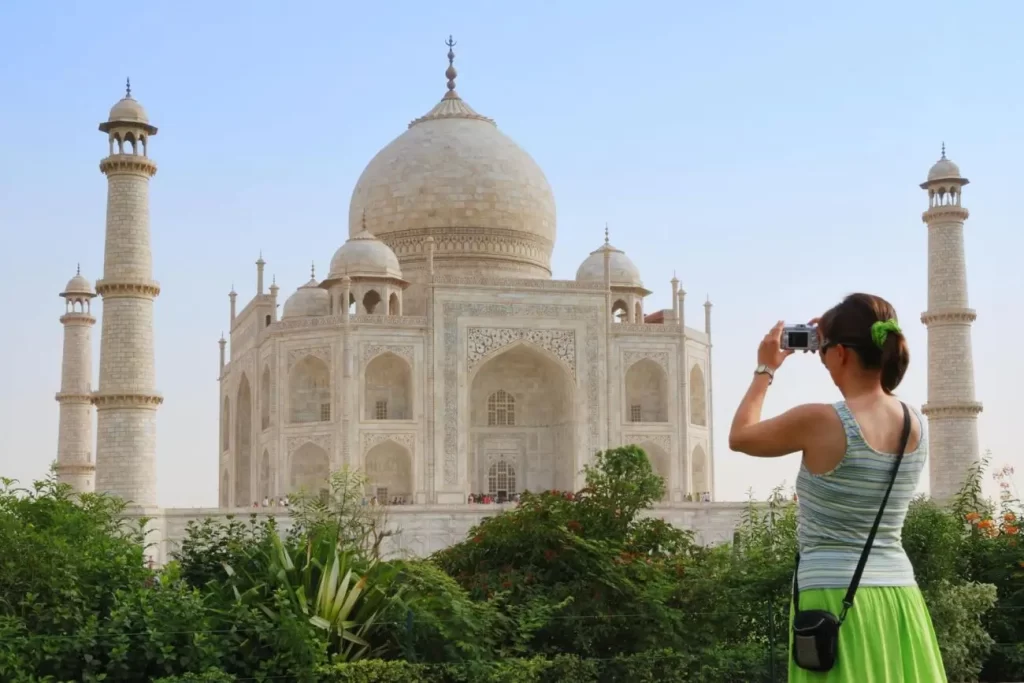
The Taj Mahal is a mystic monument that attracts people from all over the world. Its architectural beauty makes jaw-dropping revelations about Mughal Architecture, the people behind its construction, and India’s history of invasions and kingdoms.
The Taj Mahal is a wonder of the world and a UNESCO World Heritage Site built in Agra on the banks of the Yamuna. The construction of this massive fort took 22 long years and was completed in 1648.
The Wonder of the World was built by Shah Jahan (Mirza Shahab-ud-Din Muhammad Khurram), the 5th Mughal Emperor, in the fond memory of his wife Mumtaz Mahal, who died while giving birth to a baby.
The iconic architectural marvel is a must-visit place in Agra, and the best time to visit is sunrise. During the sunrise, the pristine Makrana white marble monument turns into hues of yellow and gold when the first sun rays fall on it.
You get the best views of the Taj Mahal during the sunrise, and the complex is also less crowded during the sunrise.
Agra Fort

Agra Fort was once the grand residence of the Mughal Empire, which ruled India and made Agra their seat of power in the form of capital. The complex took years to build and used by rulers, invaders, and colonisers. It was ultimately taken over by the Government of India when India gained independence in 1947.
Agra Fort is a UNESCO World Heritage Site. It is built of iconic Red Sandstone, making it look like a palace of the royals. The Mughal Emperor built the gargantuan fort near the Taj Mahal.
As the residence of the kingdom, several structures, tombs, places of worship, and an audience hall were once functional. The design of the Red Fort is iconic and is an example of Mughal Architecture, where attention to detail, intricate designs, and marble inlay work were widely adopted in buildings, mosques, and monuments.
Itimad-Ud-Daulah
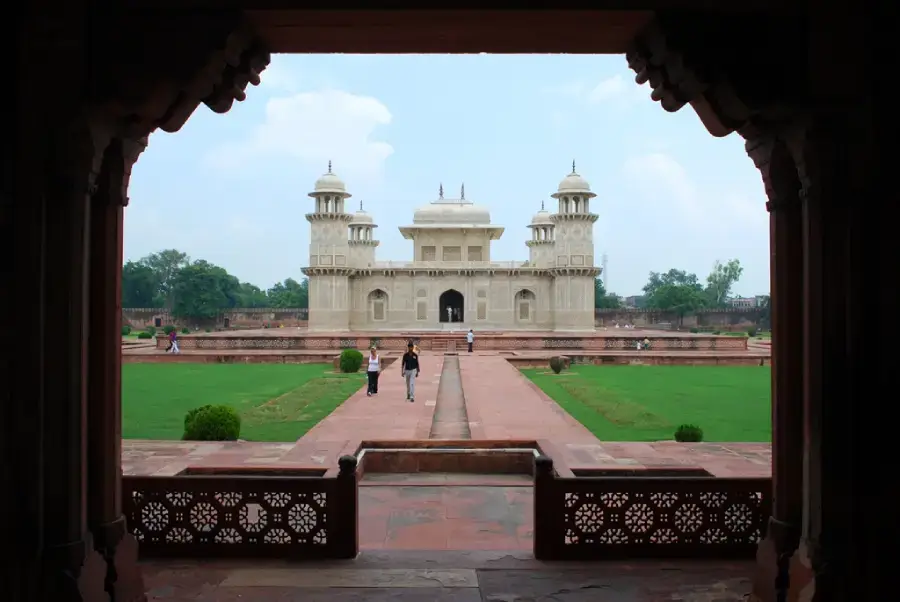
The tomb of Itimad-Ud-Daulah is an architectural masterpiece that truly defines the Mughal style. The marble inlay work on its walls is impeccable and looks spectacular when examined closely.
Itimad-Ud-Daulah is a mausoleum of Mirza Ghiyas Beg, a decorated officer and chief treasurer of the Mughal Empire. Mirza Ghiyas Beg was brought from Iran and used to serve the Mughals under the leadership of Akbar.
The architectural style of the tomb is Mughal Architecture and its design resembles that of the Taj Mahal. Hence, the mausoleum is also known as ‘Baby Taj’ or ‘Draft of Taj Mahal’. The iconic tomb is situated on the banks of Yamuna and has Charbagh-styled gardens that look alluring to the eyes.
Fatehpur Sikri
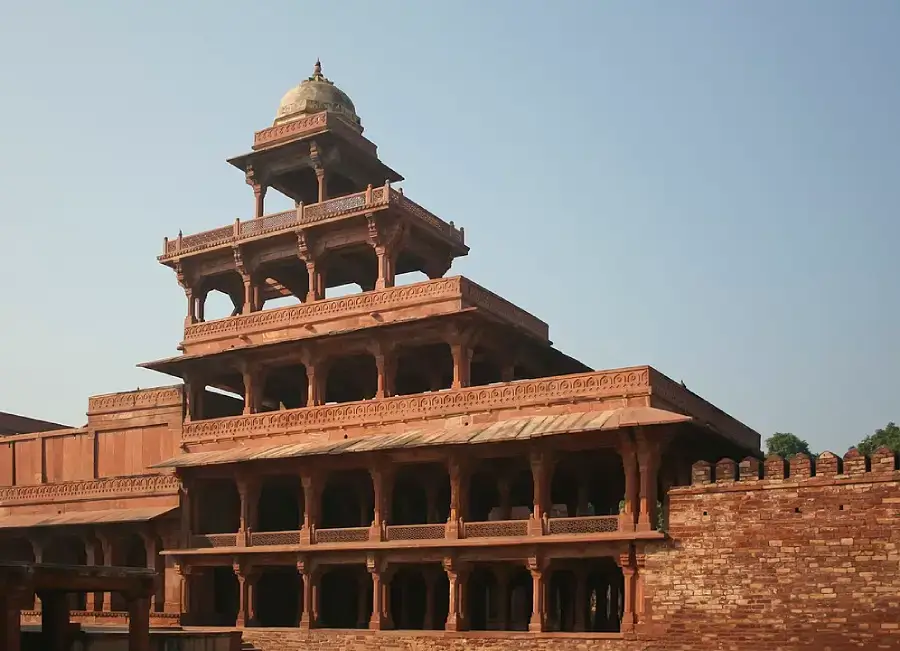
The town of Fatehpur Sikri is old and holds a significant place in India’s Medieval history. It was built by Mughal Emperor Akbar and included a religious compound dedicated to a Sufi Saint who predicted the birth of a child to the emperor.
The walled city houses several complexes, including audience halls, residences, lush-green gardens in Charbagh style, and more. Fatehpur Sikri today is the remains of what once was the capital of the Mughals after they moved it from Agra.
Fatehpur Sikri is the third UNESCO World Heritage Site in Agra after the Taj Mahal and Agra Fort and is one of the city’s major tourist attractions.
Sikandra

Sikandra is the tomb of Mughal Emperor Akbar, who had the longest reign in the Mughal Empire. The tomb is built away from all other Mughal monuments in Agra and is a slightly less touristic place.
Like other Mughal monuments, Sikandra is built in Mughal architecture with similar highlights of marble inlay work and red sandstone. Jahangir, Akbar’s son, commissioned the tomb eight years after it was completed.
Gurudwara Guru Ka Taal
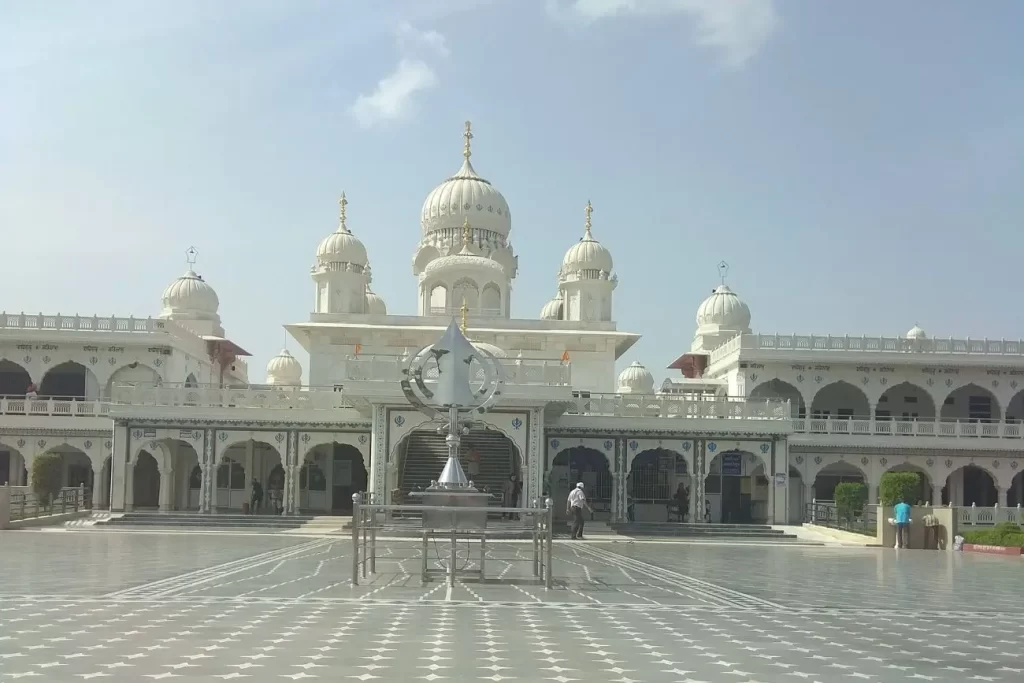
Gurudwara Guru Ka Taal is a religious place for followers of Sikhism but is open to all. This Gurudwara is devoted to the ninth Sikh guru, Guru Teg Bahadur, who voluntarily surrendered against the Mughal emperor and oppressor Aurangzeb.
Later, during his jail term, he was beheaded on the orders of the Mughal ruler. During the rulings of the Mughals, emperor Aurangzeb turned orthodox and went on assassinating non-muslims or forcing them to convert to Islam. The feared Hindus and non-muslims reached out to Guru Teg Bahadur for help and to protect the rights of the Hindus.
Guru Teg Bahadur was a religious preacher who defended the right to pray and practice one’s religion without fear. He refused to convert and vouched for religious freedom. He refused to convert and chose his execution voluntarily.
Thousands of devotees visit Gurudwara Guru Ka Tal to pay homage to Guru Teg Bahadur. The Gurudwara is a beautiful monument in Agra and is highly recommended for visitors to the city.
Conclusion
Agra is one of the best cities to explore North India’s history and stories of invasions, rulings, and the construction of magnificent structures. Numerous places and sites have existed for hundreds and thousands of years and are still well preserved and must be seen. When you are in Agra, make sure that you visit each one.


